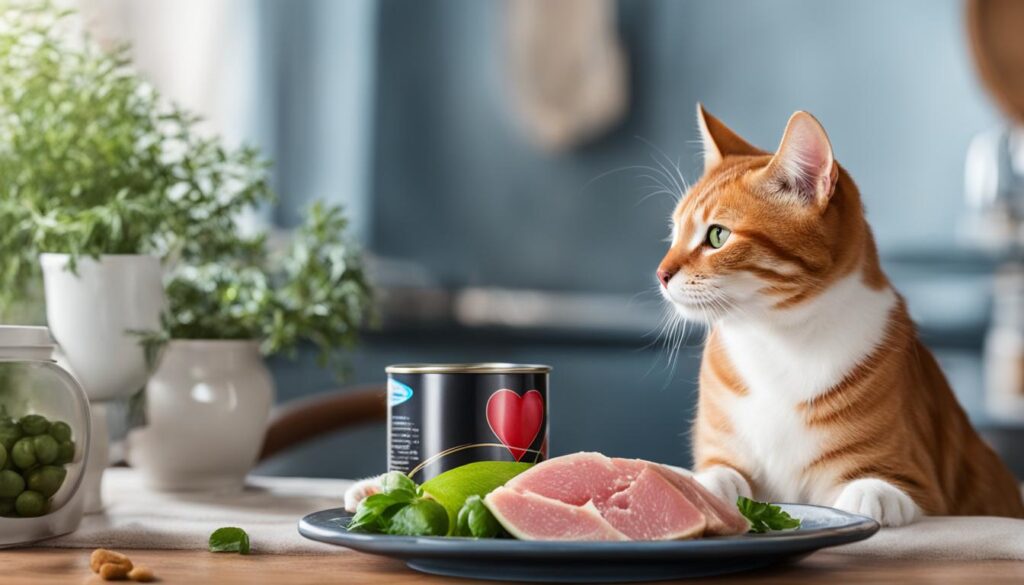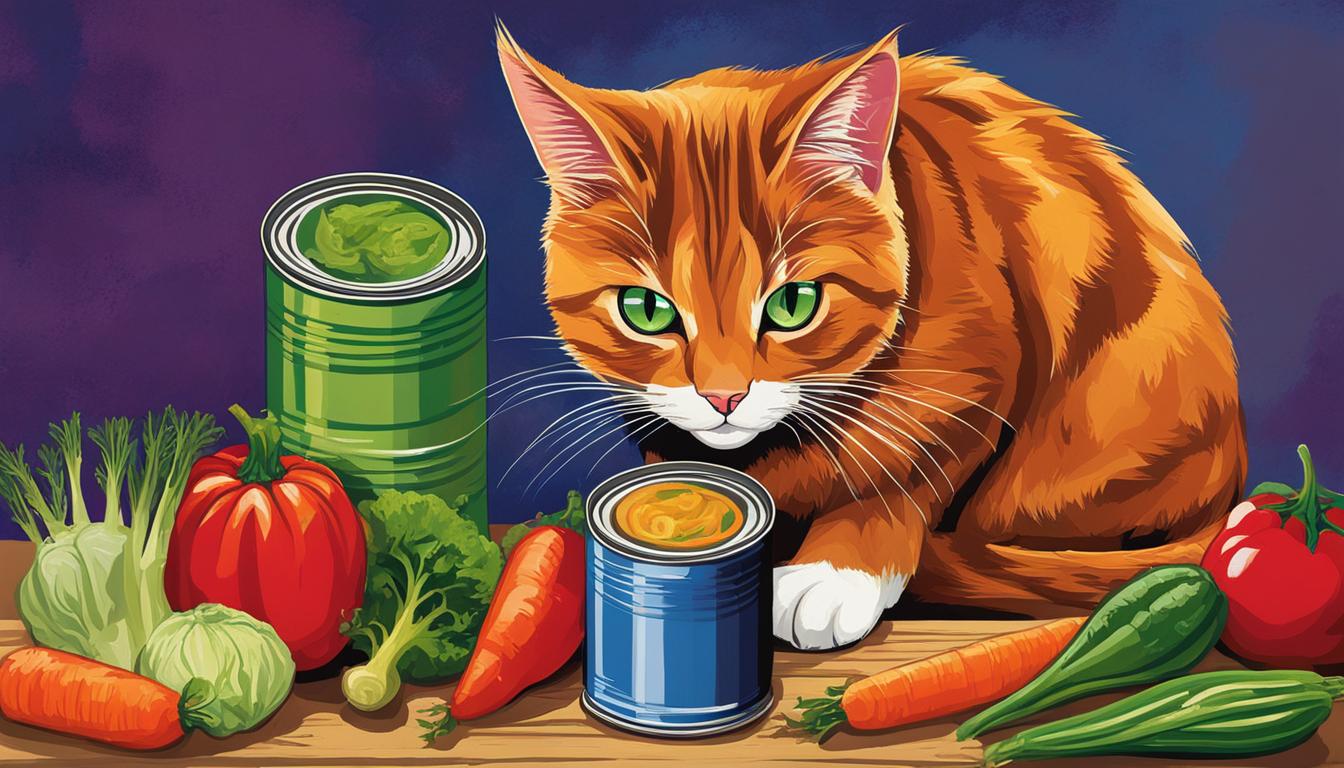As a cat owner, I often find myself wondering if my feline companion can enjoy some of the same foods I do. One particular question that often pops into my mind is whether cats can eat canned tuna. It’s no secret that tuna is a popular choice among humans, but is it safe and beneficial for our furry friends as well? Let’s dive into the pros and cons of including canned tuna in a cat’s diet.
Feeding cats can be quite a puzzling task. While some cats have a refined palate and are picky eaters, others seem to devour anything that comes their way. So, can cats eat canned tuna? The answer is yes, but with a few important caveats.
Tuna can indeed be a tasty treat for cats. Its strong aroma and rich flavor can be highly appealing to our feline friends. However, it’s important to remember that tuna should not be the main source of a cat’s nutrition. While it contains protein and other nutrients, it lacks essential vitamins and minerals that cats need to thrive.
The type of tuna and the way it is prepared also play a crucial role in its suitability for cats. Fresh tuna, for instance, can contain parasites that are harmful to cats. It’s best to stick to canned tuna and choose options that are low in sodium and without added seasonings or sauces.
Key Takeaways:
- Cats can eat canned tuna, but it should not be their main source of nutrition.
- Opt for canned tuna instead of fresh tuna to avoid potential parasites.
- Choose low-sodium options without added seasonings or sauces.
- Tuna provides a rich flavor that cats enjoy, but it should not replace their balanced diet.
- Consult with a veterinarian to ensure your cat’s dietary needs are being met.
Do Cats Like Tuna?
When it comes to tuna, cats are undeniably drawn to its enticing smell and taste. Many feline friends will come running at the mere whiff of this fishy delight. However, it’s important to consider that not all cats have the same preferences, and some may not be as enthusiastic about tuna as others. Nevertheless, it is safe to say that tuna is generally well-received by our beloved furry companions.
While cats may have a natural affinity for tuna, it’s vital to be aware of potential allergies. Just like humans, cats can develop allergies to certain foods, including tuna. Allergic reactions may manifest as itchy skin, hair loss, or even digestive issues. If you notice any adverse reactions in your cat after consuming tuna, it’s best to consult a veterinarian and consider alternative protein sources for their diet.
“Cats are naturally attracted to the smell and taste of tuna, but it’s important to remember that it should not replace their regular balanced diet.”
| Cats like tuna | Cats with tuna allergies | |
|---|---|---|
| Prevalence | Most cats enjoy the taste of tuna | Some cats may develop allergies to tuna |
| Effects | Can be a tasty treat for cats | Allergic reactions such as itchy skin and hair loss |
| Considerations | Tuna should not replace their regular balanced diet | Consult a veterinarian and consider alternative protein sources |
While cats may appreciate the flavor, it’s important to remember that tuna alone does not provide a complete and balanced diet. Commercial cat foods and treats often incorporate tuna flavoring, offering a safe way to give cats that delectable taste without compromising their overall nutrition. These products are carefully formulated to meet feline dietary requirements, ensuring that our feline friends get the nutrients they need.
In summary, cats are generally fond of tuna, but it’s vital to be mindful of potential allergies and not make it the sole focus of their diet. Tuna flavoring in commercial cat foods can provide a safe and controlled way to satisfy their cravings, while still ensuring they receive a well-rounded nutritional intake. As responsible cat owners, it’s our duty to strike a balance between indulging their desires and meeting their dietary needs.

Health Benefits of Tuna for Cats
Tuna can offer several health benefits for cats when incorporated into their diet. Here are some key advantages:
- Tuna helps maintain a healthy weight: Due to its low-calorie and high-protein content, tuna can aid in weight management for cats. Including tuna in their balanced diet can support a healthy weight and prevent obesity.
- Tuna may improve a cat’s appetite: Cats may experience a temporary drop in appetite due to various factors. Tuna’s strong aroma and enticing taste can help stimulate their appetite and encourage them to eat.
- Tuna can fight inflammation: Tuna is rich in omega-3 fatty acids, which have anti-inflammatory properties. Incorporating tuna into a cat’s diet can help reduce inflammation and promote overall health, particularly in conditions such as arthritis.
I always remember the words of my veterinarian: “Adding tuna to your cat’s diet can provide valuable health benefits, but it should be done in moderation.”
It’s important to note that while tuna offers several health benefits, it should not replace a cat’s balanced diet. Tuna should be given as a supplement or occasional treat, rather than constituting a significant portion of their meals.

| Health Benefits of Tuna for Cats | Description |
|---|---|
| Tuna helps maintain a healthy weight | Tuna’s low-calorie and high-protein content can support weight management in cats. |
| Tuna may improve a cat’s appetite | The strong aroma and taste of tuna can stimulate a cat’s appetite, especially when they experience a temporary drop in appetite. |
| Tuna can fight inflammation | The omega-3 fatty acids in tuna have anti-inflammatory properties, which can benefit cats with conditions like arthritis. |
Remember to consult with your veterinarian before introducing tuna or any new food into your cat’s diet. They can provide personalized advice based on your cat’s specific needs and health conditions. By understanding the health benefits of tuna for cats and feeding it in moderation, you can enhance your feline friend’s overall well-being.
Risks of Feeding Cats Tuna
Feeding cats tuna can have its risks, and it’s crucial for cat owners to be aware of these potential hazards. One of the main concerns when it comes to tuna consumption in cats is the presence of mercury in canned tuna. Mercury is a toxic substance that can accumulate in a cat’s body over time and lead to mercury poisoning.
To mitigate this risk, it is essential to choose low-mercury tuna options when feeding cats. Tuna species such as skipjack or yellowfin that are canned in freshwater tend to have lower mercury levels compared to other varieties. By opting for these types of tuna, cat owners can minimize the potential health risks associated with mercury exposure in their feline companions.
Additionally, it’s important to consider the frequency of tuna in a cat’s diet. While tuna can provide some nutritional benefits, it should not make up a large portion of a cat’s regular diet. Cats require a balanced and complete diet that includes a variety of nutrients from different sources. Relying heavily on tuna can lead to nutritional imbalances and deficiencies, which may have adverse effects on a cat’s overall health and well-being.
| Tuna in Diet | Frequency |
|---|---|
| Occasional Treat | Once or twice a week |
| Regular Consumption | Not recommended |
As with any dietary changes or concerns, it’s always best to consult with a veterinarian. They can provide personalized guidance and ensure that your cat’s nutritional needs are being met while minimizing any potential risks associated with tuna consumption.
Tuna in Water vs. Oil for Cats
When it comes to feeding tuna to cats, choosing the right type can have a significant impact on their health. Tuna packed in water is generally considered a better option for cats compared to tuna packed in oil. Not only does tuna in water provide a healthier choice, but it also helps prevent potential gastrointestinal issues and weight gain in cats.
Tuna packed in water is lower in calories and contains less unhealthy fats compared to tuna packed in oil. This makes it a more suitable choice for cats that are watching their weight or are prone to weight gain. By opting for tuna in water, cat owners can provide their feline friends with a nutritious treat without compromising their overall well-being.
Additionally, choosing tuna in water over tuna in oil can help prevent digestive issues in cats. The oil in tuna can potentially upset a cat’s gastrointestinal tract, leading to discomfort, diarrhea, or other digestive problems. By selecting tuna canned in water, cat owners can minimize the risk of these issues and ensure a smoother digestion process for their furry companions.
| Tuna in Water | Tuna in Oil |
|---|---|
| Lower in calories | Higher in calories |
| Contains healthier fats | Contains more unhealthy fats |
| Less likely to cause digestive issues | May contribute to gastrointestinal upset |
In conclusion, when it comes to feeding cats tuna, it is recommended to choose tuna packed in water rather than tuna packed in oil. Tuna in water provides a healthier option with fewer calories and less negative impact on a cat’s digestive system. By making this simple choice, cat owners can ensure their feline friends can indulge in the pleasure of tuna while maintaining their overall health and well-being.
Conclusion
So, can cats eat tuna? The answer is yes, but with caution. Tuna can offer some health benefits for our feline friends, such as helping them maintain a healthy weight and improving their appetite. However, it’s crucial to be aware of the risks associated with feeding cats too much tuna.
Risks of feeding cats tuna primarily include mercury poisoning and potential nutritional imbalances. Certain types of tuna can contain high levels of mercury, which can be harmful to cats. Therefore, it’s essential to choose low-mercury tuna options, such as skipjack or yellowfin canned in fresh water.
Additionally, the frequency of tuna in a cat’s diet should be limited. While cats may find tuna irresistible, it should not make up a significant portion of their meals. Regularly feeding them too much tuna can lead to nutritional deficiencies and health issues. It’s best to consult with a veterinarian to ensure your cat’s dietary needs are being met.
As an alternative to store-bought tuna, you can also make homemade tuna treats for your feline companion. This way, you have better control over the ingredients and can ensure a healthier option. Homemade treats can be a delightful indulgence for your cat while minimizing the risks associated with excessive tuna consumption.
FAQ
Can cats eat canned tuna as their main diet?
No, tuna should not be the main source of nutrition for cats. While it can be a tasty treat, it does not provide all the necessary nutrients cats need to stay healthy.
Do cats like tuna?
Many cats are attracted to the smell and taste of tuna. However, some cats may develop allergies to tuna, causing itchy skin and hair loss.
What are the health benefits of tuna for cats?
Tuna is a low-calorie, high-protein food that contains essential nutrients. It can help cats maintain a healthy weight, improve appetite, and support heart health.
Are there risks associated with feeding cats tuna?
Yes, there are risks. Certain types of tuna can contain high levels of mercury, which can lead to mercury poisoning. Feeding cats too much tuna can also cause nutritional imbalances and potential health issues.
Is tuna packed in water or oil better for cats?
Tuna packed in water is generally a better option for cats. It is lower in calories and unhealthy fats compared to tuna packed in oil.
Can cats eat homemade tuna treats?
Homemade tuna treats can be a safer and healthier alternative for occasional indulgence. However, it is still important to not make tuna a significant part of a cat’s diet.





